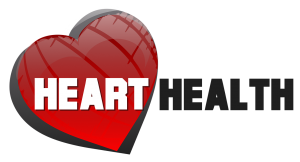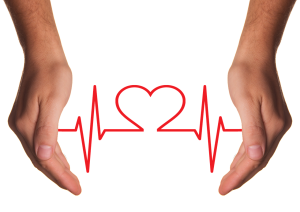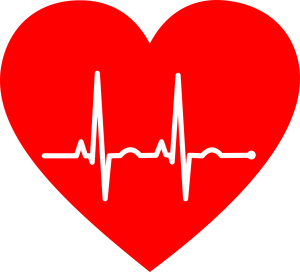
Part I: The Psychophysiology and Neurocardiology of the Heart: The Research of HeartMath Institute
Federally designated by President Lyndon B. Johnson (via Proclamation 3566) on December 30, 1963, the Congress, by joint resolution on that date, has since requested the President to proclaim February as American Heart Month. In correspondence with this, and the fact that Valentine’s day arrives on the 14th, the health care community unites to focus on further educating Americans on the importance of healthy hearts.
Unfortunately, more awareness has not led to a decrease in cardiovascular associated mortality in the United States (1, 2, 3, 4, 5). Currently, the Center for Disease Control and Prevention (CDC) division of National Center for Health Statistics lists heart disease at a rate of 168.5 deaths per 100,000 in 2015. This was a slight increase from the 167 per 100,000 in 2014. To further explain the implications of these statistics, the American Heart Association reports that “2,300 Americans die of cardiovascular disease each day, an average of 1 death every 38 seconds. But together we can change that!”
How exactly can we alter this trajectory?
I think it’s a good time to pause and contemplate this question. If more knowledge and information isn’t leading to better outcomes, we may want to investigate why, rather than pushing more of the same, ineffective strategies. Perhaps, we need to step back and take a look with new eyes on the heart and how to better take care of it, in a holistic way.
During the month of February, I want to explore some new concepts that take us beyond what is currently being considered preventive medicine in heart care.
First, I will start with a few philosophies that move beyond the heart being an anatomical pump that needs to keep its “pipes” (blood vessels) from getting clogged up by cholesterol. These more recent perspectives include the research on the psychophysiology and neurocardiology of the heart by the HeartMath Institute and the new, controversial viewpoint of the “Cosmic Heart.” The latter viewpoint is even more divergent and based on Dr. Cowen’s work that the heart is not even a pump at all!
I will also discuss an integrative approach that includes all that we learned from epigenetics: nutrition, lifestyle, movement, mind-body practices, integrative medicine, and of course, essential oils, as an empowering and effective way to achieve healthy hearts and strong bodies.
To keep the article series less than a thesis, in no way do I proclaim that this is a comprehensive overview of all things related to heart health. For even more details, I have provided resources from experts in cardiovascular disease that are more knowledgeable in certain areas than myself.
Now, let’s begin!

Moving Beyond Blood Flow and Into the Rhythm of the Mind of the Heart
Although we may have learned that the heart is an anatomical pump which pushes around our blood and feeds our tissues and organs oxygen, this belief about the boundaries of the heart is being updated and modified.
According to the Science of the Heart: Exploring the Role of the Heart in Human Performance by the HeartMath Institute: An Overview of Research Conducted by the HeartMath Institute:
New research shows the human heart is much more than an efficient pump that sustains life. Our research suggests the heart also is an access point to a source of wisdom and intelligence that we can call upon to live our lives with more balance, greater creativity and enhanced intuitive capacities. All of these are important for increasing personal effectiveness, improving health and relationships and achieving greater fulfillment.
This overview further explores, “intriguing aspects of the science of the heart, much of which is still relatively not well known outside the fields of psychophysiology and neurocardiology.”
It also aims to bridge “the science of the heart and the highly practical, research-based skill set known as the HeartMath System.”
More research on the heart continues to surprise us as we explore its modern day revelations. For example, it’s been discovered that our heart’s rhythm effects our brain’s ability to process information. Furthermore, the heart itself has its own brain!
As we continue to discover more about the powers of the organ that lies in our chest cavity, the HeartMath Institute is providing the world with evidence that connection and “coherence” between the head and the heart, on an individual and societal level, can have profound and synergistic health outcomes. HeartMath Institute FAQs states:
Personal coherence, also known as psychophysiological coherence, refers to the synchronization of our physical, mental and emotional systems. It can be measured by our heart-rhythm patterns: The more balanced and smooth they are, the more in sync, or coherent we are. Stress levels recede, energy levels increase and our brain and what HeartMath calls the “heart brain” work together. It is a state of optimal clarity, perception and performance. HeartMath tools and technology have been scientifically proven to help us achieve personal coherence.
Global coherence refers to the mental, physical, emotional and spiritual well-being of the greater community of human beings acting in concert with their own hearts, each other and nation to nation in harmony with the living earth. HeartMath believes coherence is highly achievable globally when large numbers of people focus heartfelt intentions on a common goal.
To view more on the HeartMath Institute’s research, click here.
By achieving a state of coherence and emotional health, we may be able to impact all aspects of the heart’s function, before it reaches a pathological state from neglect, stress, and poor choices based on negative response patterns. HeartMath Institute is demonstrating that simply viewing the heart as a “pump” mechanism is grossly inadequate. In fact, it is now becoming common knowledge and conventionally accepted that stress and emotions affect the heart and are connected. (6, 7, 8, 9)
Now, let’s explore the second philosophy that takes the whole understanding of the heart’s function and questions the very anatomical knowledge we have been taught as the truth! To read more on this and get access on essential oils resources that bridge these two philosophies into a scent-sational action, click here.
You can also listen to both parts in audio form here.

This material is for information purposes only and is not intended to diagnose, treat, or prescribe for any illness. You should check with your doctor regarding implementing any new strategies into your wellness regime. These statements have not been evaluated by the FDA. (Affiliation link.)
Thanks Pixabay.



